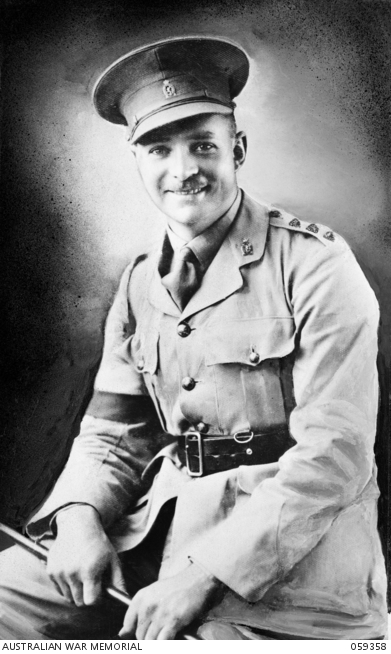Daring Deeds: Captain Lionel Matthews
Studio portrait of Captain Lionel Colin Matthews GC MC 8th Australian Division Signals. c. 21 January 1942.
On 2 March 2015, the Memorial accepted the donation of a George Cross which had been posthumously awarded to Captain Lionel Colin Matthews for extreme and selfless courage while a prisoner of war. The George Cross is ranked just behind the Victoria Cross, and is awarded for acts of extreme bravery performed by civilians and military personnel when not under enemy fire. It is no longer awarded to Australians, as it was superseded in 1975 by the Australian Cross of Valour.
Medal group of Captain Lionel Colin Matthews GC MC 8th Australian Division Signals.
Matthews was already serving in the Australian Military Forces (AMF) when war was declared in 1939, having served with the Civilian Military Forces from 1935 followed by the Royal Australian Navy Volunteer Reserve and 3rd Division Signals, AMF. On 28 July 1940, he was seconded to the Australian Imperial Force and transferred to 8 Division Signals as a lieutenant. There, he was personally selected by Lieutenant Colonel Thyer to command the Wireless Operating section, known as ‘Eddy’ Section, which was responsible for artillery brigade communications. ‘Eddy’ Section and the rest of the division embarked aboard Queen Mary on 2 February 1941, bound for Malaya. ‘Eddy’ section was moved to Malacca on arrival in Malaya, and was responsible for communications back to the Divisional Headquarters for 2/10 Field Regiment.
During the Japanese invasion of Malaya in December 1941, Matthews earned a Military Cross for maintaining communications while under heavy fire and bombardment at Gemas. He was promoted to Captain just before the surrender in February 1942 and was among more than 15,000 Australian soldiers who were captured and imprisoned at the fall of Singapore. The ribbon of the Military Cross – a spare belonging to a fellow internee – was presented to him at a ceremony in Changi prisoner of war camp on 10 May 1942.
Prisoners were soon dispersed to other regions in work parties. On 8 July 1942 Matthews became part of ‘B’ Force, a work party of almost 1500 men which was sent by ship to Borneo and imprisoned at Sandakan. Soon after arrival, Matthews was chosen as Intelligence Officer and began to direct an underground intelligence organisation from captivity. Through connections with sympathetic locals and by maintaining a secret radio, he was able to co-ordinate the provision of medical supplies to the camp, weapons deliveries from the Philippines, escapes, and readiness for an uprising against the Japanese. In July 1943, the intelligence network was betrayed to their captors. Although Matthews had a plan of escape and a chance to flee, he chose to remain with his men and submit to arrest. Over the following months, he was subjected to brutal interrogation but never gave away his mates. On 2 March 1944, he was brought before a Japanese military court in Kuching and sentenced to execution. In an unusual offer, possibly a sign of grudging respect by the Japanese, he was permitted to select his own means of execution. He chose firing squad, and was executed the same day.
Captain Matthews was buried at Kuching but was reinterred at Labuan at the end of the war. His full Military Cross was handed to his 11-year-old son David by the Governor General in 1947, and now accompanies his George Cross and service medals.

